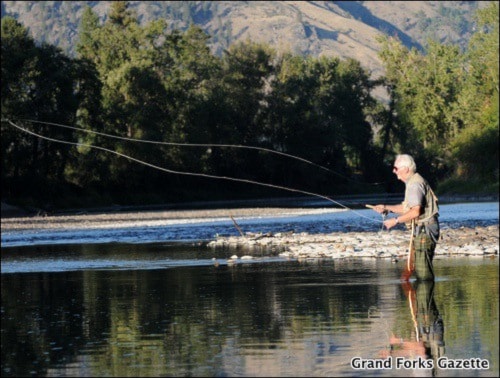Rock Snot, Didymosphenia geminate and Didymo. These are three names for one big potential problem. While didymo, with its yellow-brown to white colour, may look like slimy snot, it is actually a species of diatom – a type of algae.
Didymo consists of a silica shell, which in other diatoms is free floating, but in the case of didymo is attached to rocks by a gelatinous, multi-branched stalk giving it the look of a microscopic palm tree. It then forms a dense mat that covers the stream bottom, causing the waterway to appear polluted or, at the very least, unappealing.
But didymo’s ability to mar waterways is just one of its consequences. Due to the dense mat formation, it restricts the flow of water and oxygen to eggs and fry of salmonids, such as trout.
It also physically affects adult invertebrates by causing gill irritations and clogging, consequentially reducing, populations in infected areas. And gills aren’t the only things that didymo clogs, water intakes are also subject to obstructive powers.
It should be noted, however, despite its deleterious appearance and odor, it does not affect drinking water quality; in fact other species of diatoms are used in toothpaste.
Didymo results in essentially every quality a fisherman doesn’t want in a waterway, which is ironic because the emergence of didymo in British Columbia is linked to the introduction of felt-soled waders.
This is due to the fact that didymo cells can survive up to 30 days in wet felt soles. But felt-soled waders aren’t the only vector for its spread; migratory birds, pets, boats, diving equipment and any other equipment used in lakes and rivers can also spread this alga.
Beginning to believe that everything that touches infected water is a vector? Well, there is a solution. Either restrict the use of equipment or water vehicles to only that particular waterway, or – if moving from one waterway to another is a must – follow the steps outlined by the Invasive Species Council of British Columbia: clean, drain and dry.
Clean items or vehicles, drain at affected site all parts of items, which can retain water and dry completely, inside and out, for at least 48 hours before using it in another waterway.
The most involved step is cleaning. Cleaning entails checking and removing algae from equipment (such as paddles), and water vehicles (such as inner tubes) at the affected sites.
Then clean all non-absorbent items with either water at 60° C for one minute or a solution of five per cent dishwashing liquid and warm water.
For absorbent items, such as felt-soled waders, soak in a solution of 45° C water and five percent dishwashing liquid for at least 30 minutes.
By following these steps, the chances of prevention of didymo will be greatly increased. For more cleaning options and information visit: www.protectyourwaters.net/.
– Written by Jocelyn Kickbush for the Boundary Weed Management Committee
